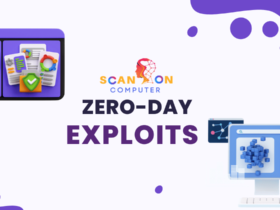An Application Programming Interface (API) is a set of rules and protocols that enables different software applications to communicate and interact with each other. An API defines how requests should be made, how data should be formatted, and what responses clients can expect. It acts as a contract between a provider and a consumer, abstracting the underlying implementation while exposing functionality in a secure and controlled manner. Understanding what is an API is essential for security professionals, CTOs, and industry leaders to architect resilient, scalable, and secure digital ecosystems.
In the first 100 words, we establish context, positioning APIs as foundational building blocks for modern software, driving digital transformation, and enabling seamless integration across systems and services.
Understanding the API Definition
At its essence, an API is an intermediary that processes requests and returns responses. It facilitates:
-
Abstraction: Hides internal logic, exposing only essential features.
-
Standardization: Enforces consistent methods, data formats, and error handling.
-
Security: Implements authentication, authorization, and throttling controls.
Core LSI and semantic keywords include interface design, API contract, RESTful API, endpoint security, and API lifecycle. These terms enhance search relevance and help readers grasp peripheral concepts.
Core Concepts and LSI Keywords
-
Interface Contract: The documented specification outlining endpoints, parameters, and schemas.
-
RESTful Principles: Stateless communication, resource-based URIs, uniform interface.
-
API Lifecycle: Phases from design, development, testing, deployment, versioning, to deprecation.
-
API Orchestration vs. Choreography: Centralized versus decentralized control of API interactions.
The Evolution and Importance of APIs
Early Interfaces to Modern Web Services
APIs trace back to early programming libraries, where functions and procedures within monolithic applications were exposed through function calls. With the advent of web protocols:
-
SOAP (Simple Object Access Protocol): Emerged in the late 1990s as an XML-based messaging protocol. It relied on WSDL (Web Services Description Language) for formal contracts and WS-* standards for security and transactions.
-
REST (Representational State Transfer): Coined by Roy Fielding in 2000, REST leveraged standard HTTP methods and resource-oriented URIs to simplify communication and reduce overhead.
-
GraphQL: Developed by Facebook in 2015, GraphQL introduced a flexible query language, enabling clients to specify exactly the data they need, reducing over-fetching and under-fetching issues.
Business Value of APIs
-
Accelerated Innovation: APIs enable rapid prototyping and modular development, reducing time-to-market.
-
Enhanced Customer Experiences: Personalized services, such as dynamic dashboards or real-time notifications, rely on robust API integrations.
-
Ecosystem Expansion: Public APIs allow third-party developers to create complementary applications, extending a platform’s reach and generating new revenue streams.
-
Operational Efficiency: Internal APIs streamline workflows by integrating disparate systems—CRM, ERP, billing—into cohesive pipelines.
Key Components of an API
Endpoints and Resources
An endpoint is the network address (URI) where the API can be accessed. Resources represent entities, such as users, orders, or devices. For example:
| Resource | Endpoint | Description |
|---|---|---|
| Users | https://api.example.com/users | Collection of user records |
| User | https://api.example.com/users/{id} | Single user resource |
Methods and Verbs
HTTP verbs specify operations on resources:
-
GET: Retrieve resource(s).
-
POST: Create new resource.
-
PUT/PATCH: Update existing resource.
-
DELETE: Remove resource.
Choosing the correct verb enforces semantic clarity and aligns with RESTful design.
Request and Response Formats
Most APIs use JSON for its lightweight, human-readable syntax. XML persists in legacy SOAP services. HTTP headers like Content-Type and Accept negotiate data formats.
Types of APIs
REST APIs
RESTful APIs emphasize statelessness, cacheable responses, and a uniform interface. They are widely adopted across web and mobile backends.
SOAP APIs
SOAP’s strict envelope structure, built-in error handling, and WS-Security extensions make it suitable for enterprise scenarios requiring transactional integrity and formal contracts.
GraphQL APIs
GraphQL APIs allow clients to define the shape of responses via queries, optimizing data transfer. Ideal for complex, nested data models in single-page applications and mobile apps.
Webhooks and Streaming APIs
-
Webhooks: Server-to-server callbacks triggered by events, such as payment completions or database changes.
-
Streaming APIs: Maintain persistent connections for real-time data delivery, using protocols like WebSockets or Server-Sent Events (SSE).
API Security Best Practices
Authentication vs. Authorization
-
Authentication: Verifies identity via API keys, OAuth 2.0, or JWT.
-
Authorization: Determines access levels, using scopes, roles, or ACLs.
Rate Limiting and Throttling
Define quotas (requests per minute/hour) to prevent abuse and ensure equitable usage. Implement exponential backoff for retry logic.
Input Validation and Sanitization
Validate parameters against schemas (e.g., JSON Schema). Sanitize inputs to prevent SQL injection, XSS, and command injection.
Designing High-Performance APIs
Versioning Strategies
Maintain backward compatibility through:
-
URI Versioning:
/v1/customers. -
Header Versioning: Custom headers like
API-Version: 1. -
Media Type Versioning: Using
Acceptheaders with versioned media types.
Caching and CDN Integration
Set caching headers (Cache-Control, ETag) and leverage CDNs (Cloudflare, Akamai) to cache static and dynamic content, reducing latency.
Pagination and Filtering
For large datasets, implement offset/limit or cursor-based pagination. Support filtering via query parameters, e.g., ?status=active&sort=created_at.
API Management and Documentation
API Gateways and Portals
API gateways handle cross-cutting concerns—routing, authentication, rate limiting, logging, and analytics. Developer portals provide interactive documentation, SDKs, and self-service onboarding.
Swagger/OpenAPI Specifications
OpenAPI standardizes API descriptions in YAML or JSON. Tools like Swagger UI and Redoc generate interactive docs, enabling live testing and code generation.
Actionable Tips for Secure and Scalable API Integration
Monitoring and Analytics
Implement telemetry using tools like Prometheus, Grafana, or commercial APMs (Datadog, New Relic). Track key metrics—latency, error rate, throughput—and set alerts for anomalies.
Error Handling and Observability
Standardize error responses:
{
"error": {
"code": 400,
"message": "Invalid request parameter",
"details": "Parameter 'userId' must be a valid UUID"
}
}
Implement distributed tracing (OpenTelemetry) and structured logging for root-cause analysis.
Automated Testing and CI/CD
Use Postman, Newman, or pytest for API tests—unit, integration, contract. Integrate tests into CI/CD pipelines (Jenkins, GitHub Actions) to ensure builds fail on regressions.
Future Trends in API Development
API-First Architecture
Adopt contract-driven design—define APIs using OpenAPI before implementation. Enable parallel development between frontend and backend teams using mock servers.
Event-Driven and Serverless APIs
Serverless platforms (AWS Lambda, Azure Functions) expose APIs without managing servers. Event-driven architectures decouple services, enhancing scalability and resilience.
AI-Powered APIs
AI services (OpenAI, Azure Cognitive Services) provide NLP, image recognition, and anomaly detection. Integrate AI APIs to add advanced capabilities without in-house model development.
Real-World API Use Cases
Healthcare and Telemedicine
APIs enable secure exchange of patient records (FHIR standard), telehealth consultations, and remote monitoring. Patients and providers interact via mobile apps, integrating EHR systems through standardized APIs.
Financial Services and Open Banking
Open banking regulations mandate banks expose customer-permissioned data via APIs. Third-party developers build budgeting apps, payment initiations, and personalized financial services on top of bank APIs.
E-Commerce and Payment Gateways
E-commerce platforms use APIs to manage product catalogs, shopping carts, and order fulfillment. Payment gateways like Stripe or PayPal expose APIs for transaction processing, refunds, and subscriptions.
Frequently Asked Questions (FAQ)
What is the difference between an API and a web service?
An API is any interface for software interaction. A web service specifically uses web protocols (HTTP/HTTPS) for communication, often with SOAP or REST.
How does REST differ from SOAP?
REST uses lightweight JSON and standard HTTP methods, focusing on resources. SOAP mandates XML envelopes, strict schemas, and WS-* standards for security and transactions.
What makes an API secure?
Secure APIs enforce authentication (OAuth2, JWT), authorization scopes, input validation, encryption (HTTPS/TLS), and rate limiting to mitigate abuse.
How do I choose between REST and GraphQL?
Use REST for simple, cacheable, resource-oriented services. Opt for GraphQL when clients require flexible, nested data retrieval to minimize over-fetching.
What is API throttling?
API throttling limits request rates to prevent overload. It ensures fair usage by queuing or rejecting excess requests, protecting backend systems.
Can I monetize my API?
Yes. Leverage API management platforms (Apigee, Kong) to implement usage tiers, billing plans, and metering for paid API access.
What is versioning and why is it important?
Versioning controls breaking changes. It allows existing clients to continue using older API versions while new features roll out in parallel.
Conclusion
Empower your organization with robust, secure APIs that drive innovation and scale seamlessly. Schedule a consultation with our API experts today to design, implement, and optimize APIs tailored to your business needs. Continuous innovation starts with the right interfaces—let us guide your API journey to success.













Leave a Reply
View Comments